Monastic buildings towering on a rock in a sea in Normandy. Medieval houses clinging to the side, as if not to crash into the waters below, that can come rushing in with the galloping tide. For centuries a stronghold, then a prison and now one of the greatest tourist attractions in France: Mont Saint-Michel.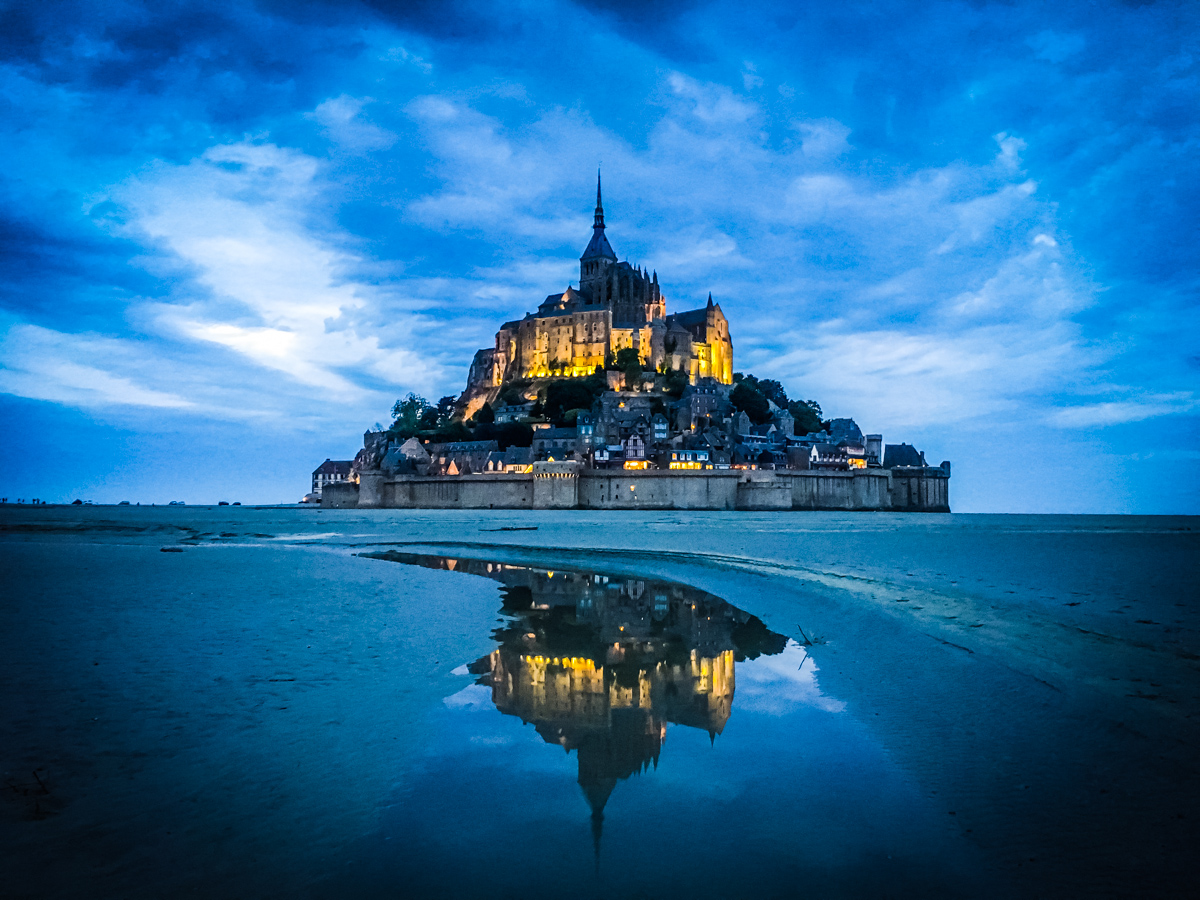
Located in the north of Normandy, France, just a stone’s throw from Brittany, lies a mountain. The informed traveller might know, that there aren’t many mountains in the north of France, so this is special. On so many levels. A rock in the ocean, in ancient times accessible only at low tide. You can see it from afar, when you’re nearing the coastline. When you’ve parked your car and start walking towards it on the low bridge, it towers in front of you like an esteemed enchantment.
An ancient stronghold
Already since ancient times, the island has held strategic fortifications but it wasn’t until 8th century AD that it became the seat of the monastery from which it is named. The structural composition of the island is a perfect example of the feudal society that constructed it: on top, God – the monastery and abbey; below, the great halls of the nobility; then housing and stores; and at the bottom – outside the walls – houses for the common people; fishermen and farmers.
Its unique position just 600 metres from land and the tides of Normandy have kept the islet in its immaculate condition and fulfilled the two purposes of the island; the religious and the defensive.
- Coat of arms of the Kingdom of Jerusalem
- One should not suffer from vertigo when living on a fortified rock
- The island is a perfect example of the feudal society that constructed it
- Mont Saint-Michel towers in front of you like an ancient enchantment
- Cobblestoned streets and slate roofs emphasise the medieval atmosphere
- The 2,5 km. long low bridge is a delightful walk, but you can take the shuttle bus!
- The colours turn blue as the sun slowly descends
- A rock in the ocean, in ancient times accessible only at low tide
It was accessible at low tide to the many pilgrims to its abbey, but still defensible as an incoming tide would strand, drive off or drown would-be assailants. The rock remained unconquered during the Hundred Years’ War and only a small garrison succeeded in fending off a full attack by the English back in 1433.
After the French revolution, its religious purpose became obsolete, but the reverse benefits of its natural defence were not lost on the French republicans, who turned the rocky islet into a prison. A lone, cold and desolate status it held until 1863, after a long campaign succeeded in their objective to restore this historical architectural treasure. It was declared a historic monument in 1874 and a UNESCO World Heritage Site in 1979. Today, it’s one of France’s most recognizable landmarks, visited by more than 3 million people each year.
Eternal enchantment
We first visited Mont Saint-Michel back in the day when the low bridge hadn’t been built yet and camper vans were allowed to stay overnight at the foot of the islet. On low tide, of course. We arrived late and snuck in together with the campers in our black SUV and spent the night in on the mattress in the back of our car. In the morning, we wandered the old streets of the fortified rock in the cosy little town, that was just waking up. We had breakfast and continued our roadtrip towards Brittany.
- The restaurants might be pricey, but what a setting!
- Beautiful view to the low-tide coastline
- A new view awaits behind every corner
- It was declared a historic monument in 1874 and a UNESCO World Heritage Site in 1979
- The medieval town is criss crossed with seetp stairs and narrow alleyways to explore
This time, we arrived in early in the afternoon. The new enormous car park were only sparsely occupied, as we visited in the middle of September and the tourist hordes had ebbed out. We chose to walk about 2,5 km. along the low bridge towards the islet, which rose majestic on front of us, but you can take the free shuttle bus if you want (you pay for the service via the exuberant parking fees). Apart from more security, the heritage site looked just like it did 10 years ago. Except for the prices. They had sky rocked.
While we waited for the sun to set, the shops gradually closed down, but most of the restaurants stayed open, because tourists kept on arriving. Not by the dozen, but as a steady flood to and from the island, like the ebb and flood of the surrounding coastline. We imagined with horror, what its must be like in summertime, and were grateful to enjoy this wonderful heritage in reasonable peace.
As the sun began to set and the colours of the sky gradually turned blue, I stood with my bare feet in the mud for half an hour, taking hundreds of pictures of this enigmatic island, capturing the different tones of blue, watching the lights coming on and gradually painting the monastery with orange and yellow colours.
What a sight to behold.
- As the sun began to set and the colours of the sky gradually turned blue..
- ..I stood with my bare feet in the mud for half an hour..
- .. taking hundreds of pictures of this enigmatic island, capturing the different tones of blue…
- .. watching the lights coming on and..
- .. gradually painting the monastery with orange and yellow colours.
- While the shops gradually closed down, but most of the restaurants stayed open, because tourists kept on arriving
If you’re visiting the northern part of France, you might want to read our Guide to 2-4 hours in Le Mans, check out the Cointreau museum in Angers or dream about Paris in a houseboat.
Learn more
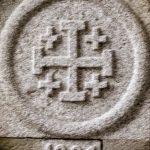
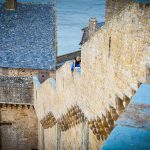

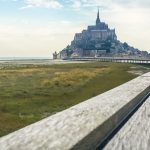
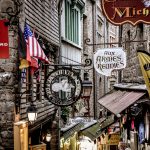
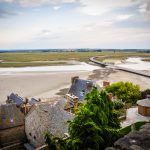



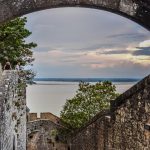


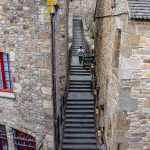




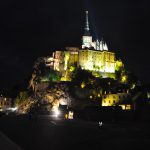




Pingback: Mont Saint-Michel – European Biz WordPress Blog